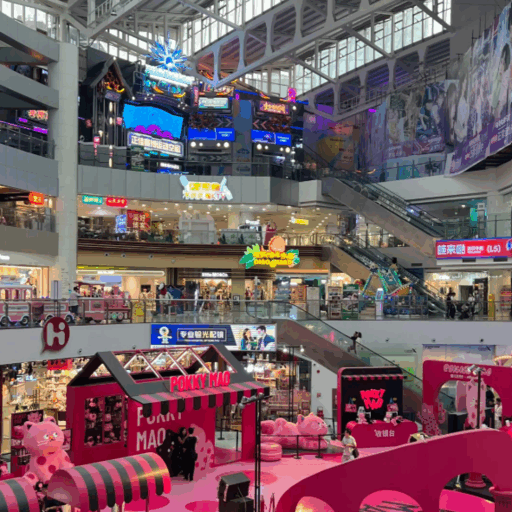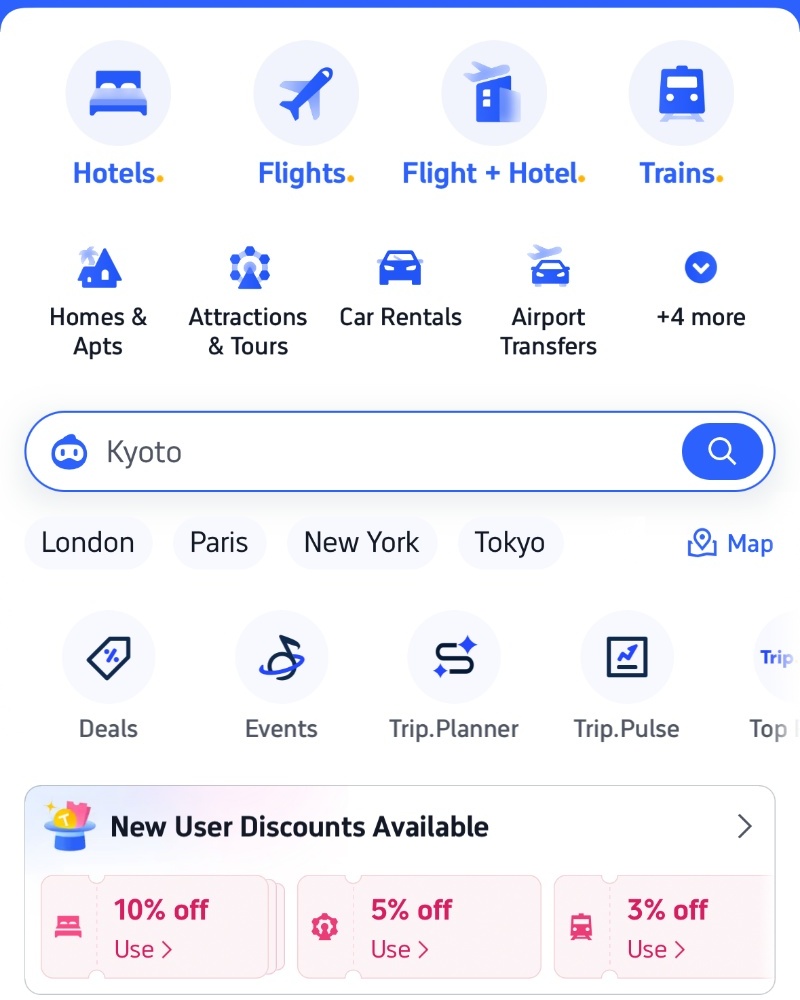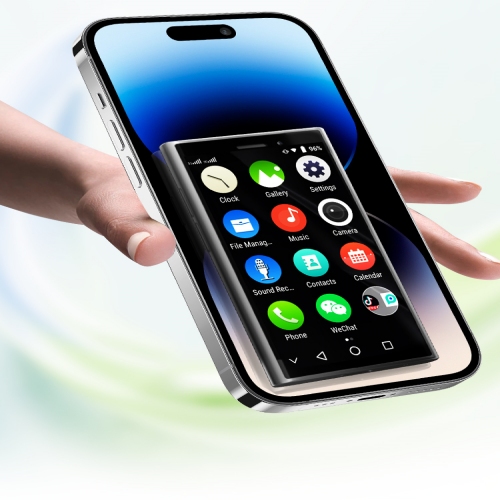Beijing, the capital of China, is a stunning city that combines a colossal history with captivating modernity. Ancient sites that span areas of long-lost dynasties and the modern active city center—whatever are you looking for? As with every city, Beijing has something for everyone, and this guide focuses on some of the lesser-known, quintessential put of this booming metropolitan area. Whether you are captivated by the fierce grandeur of the Forbidden City, excited to stroll on the long historic Great Wall, or want to lose yourself in the local customs and food, this article has a list for you. From the very first step you take in the capital of China, explore its heartbeat and perpetual moving legs—Beijing. Make plans for experiences that will forever get etched in your memories.
What are the most iconic historical attractions in Beijing?
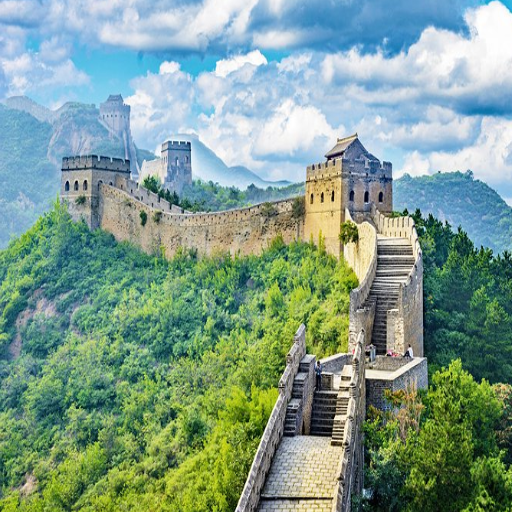
The Forbidden City: Largest Palace of the Ming and Qing Dynasties
The Forbidden City is Beijing’s crowning architectural invention as a cityscape and The Ming and Qing dynasty's imperial palace for almost 500 years. Covering 180 acres, it has nearly 1,000 preserved buildings, making it one of the largest palace complexes in the entire world. It stands as an emblem of ancient China's architecture and design philosophy, With Meridian Gate welcoming tourists with exquisite courtyards, ornate halls, and intricate carvings, each having layers of history.
The stunning moat and tall walls surrounding the Forbidden City showcase protection and exclusivity for the royal family. Now, it operates as a Palace Museum featuring a Blockbuster Palace Exhibition display alongside paintings and imperial relics worth over one million. It offers a taste of ancient China to newer generations, bringing forth the rich history of power, traditions, and grandiosity. The Hall of Supreme of Harmony building also captures many tourists' attention, offering beautiful views throughout their experience.
Understanding Ancient Chinese Imperial Rituals Through Temple of Heaven Park:
The Temple of Heaven Park in Beijing is a proud reminiscence of the intricate blending of heaven and earth in ancient Chinese civilization. It is a majestic example of Ming architecture. Built in the early 15th century, this sprawling complex served as an ever-sacred site for emperors to perform vital religious ceremonies to preserve harmony and prosperity within the empire. Boasting an area of over 273 hectares, it is one of the largest religious complexes in the world.
Surrounding the Hall of Prayer for Good Harvests are pathways and structures such as the Imperial Vault of Heaven, Circular Mound Altar, and others, each with its distinct cosmological significance reflecting the emperors’ supernatural link with the cosmos. At the center lies the hall, a stunning circular wooden structure devoid of nails showcasing symbolic craftsmanship and architectural mastery. It is capped with a blue glazed tiled roof representing the heavenly motif throughout the temple grounds. The stable yet elegant construction draws millions of tourists.
In modern times, the Temple of Heaven Park is one of Beijing's most important historical landmarks and vibrant public areas. Travelers can enjoy Witong Park as they appreciate its ancient construction and rich history and take part in local activities that include Tai Chi, group exercises, and music. The park is a landmark built to honor the ancestors of China, who greatly respected the balance of nature, culture, and rituals.
Tiananmen Square is a landmark of modern Chinese history
Known as one of the largest urban squares in the world, Tiananmen Square is the pride of the people of China, welling with zeal, vibrant power, and optimistic memories. This square is located in Beijing and is known for the tremendous transformative shifts in the country. The People’s Republic was proclaimed at this location in 1949, marking excellent historical significance. For many decades, Tiananmen Square has been used for grand military processions, national holidays, and crucial political rallies, highlighting it as one of the most critical places in central China.
The square also encompasses vital landmarks and features like the Mausoleum of Mao Zedong, the Great Hall of the People, and the Monument to the People's Heroes, which displays equally significant parts of China’s revolutionary history and political change. Their awe-inspiring history and architecture capture the attention of millions of tourists each year, giving them a gateway to understand China’s extensive history and future goals. Today, Tiananmen Square remains a cultural and political emblem that showcases the changes the country has gone through over time.
Which sections of the Great Wall of China are best to visit from Beijing?
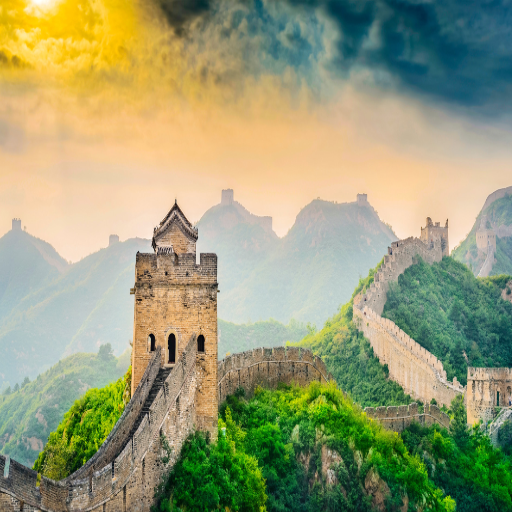
Mutianyu Great Wall: most restored and easier for families section
Mutianyu Great Wall is located 43 miles northeast of Beijing. It is famous for its restoration and ease of access, which is advantageous for all age groups. The section is approximately 2.5 kilometers long and has several well-known attractions, such as magnificent mountain scenery, well-preserved watch towers, and rich vegetation. There is also a gentle slope along the entire length of the wall, with several options for ascending, including cable cars and adventurous toboggan slides.
The historical strategic importance of Mutianyu is clear from the time it was constructed during the early Ming dynasty as a defense against northern invasions. Now, people can see its 22 watchtowers and enjoy its modern conveniences, such as shuttles, visitor centers, and family amenities. The historic structures and modern buildings captivate people of every age.
Badaling and Simatai are the two most crowded and the least overcrowded sections of the walls.
The Great Wall is one of the most prominent locations in China. Badaling and Simatai are the other two sections that are popular with tourists. Each offers stunning views and experiences targeted towards specific travel preferences. Badaling is the most accessible and well-preserved section of the Great Wall of China. Its broad walkways can easily traverse it, making it ideal for families and tour groups.
Also, solo visitors who prefer to sightsee in a calm environment will appreciate it. Situated only 70 kilometers from Beijing, Badaling has direct buses and trains, making it convenient to access public transport. Every year, millions of tourists flock to the location to witness its majestic beauty. Badaling also has surmountable modern amenities such as cable cars, restaurants, and souvenir shops. Unfortunately, the breathtaking views tend to be spoiled by the heavy crowds during peak season.
In contrast to Badaling, Simatai presents an entirely different experience as it showcases the untamed beauty of the Great Wall. Badaling is well known for its rough terrain, which is situated around 120 kilometers to the northeast of Beijing. Without the presence of commercialized amenities, Simatai maintains the wall's authentic charm, offering countless opportunities for adrenaline junkies. The wall features steep paths and uneven surfaces, challenging hikers to navigate. Simatai is popular for its stunning night tours, as the wall is lit up during the magical night sky.
Deciding between Simatai and Badaling is a matter of personal choice. Badaling is the most popular section in which to view the Great Wall for effortless convenience. On the other hand, if visitors want to escape to a tranquil and historic retreat, Simatai boasts an unrivaled experience. Both sections are remarkable representations of the Great Wall and will leave a lasting impression on tourists.
Tips for planning your Great Wall day trip from Beijing
Having thoroughly planned your trip to Beijing, the next step is to carefully consider your journey to the Great Wall of China, as travel from Beijing requires meticulous planning. Here are some tips that will make your experience memorable:
Exploring various wall sections: The Great Wall is divided into distinct sections, each presenting unique traits. The most visited section, Badaling, is highly accessible and well-preserved, making it perfect for families and first-time visitors. If you’re looking for a section that is a bit more challenging and less crowded, Simatai and Jinshanling are both superb options. Remember that some sections, like Mutianyu, offer modern features such as cable cars and still maintain breathtaking views.
Arrange Your Transport: Public buses and trains are available, as well as specific tours that take travelers directly to the Great Wall from central Beijing. For a more leisurely experience, book a private car or a tour that includes transportation. If traveling by bus, the most economical option is taking the regular buses to either Badaling or Mutianyu, but do check the timetables to avoid waits.
Plan Your Visit: Arriving early in the morning allows you to beat the crowds while still experiencing the stunning energy of the Wall’s beauty, especially in famed spots like Badaling. If possible, try to come on a weekday at the start of the month, as it is less popular during national holidays. For a unique experience, Simatai offers magical nighttime visits, allowing you to wander underneath illuminated walls.
Check Seasonal Considerations: The ideal times to explore the wall are autumn (September-October) and spring (April-May), as the weather is mild and the vistas are captivating. Be ready for the cold in winter, so bring warm clothes and proper shoes. The wall might be slippery due to ice, so walk carefully. Summer has the mildest conditions but is likely the most busy. Regardless, if you plan to visit in summer, stay hydrated and put on sunscreen.
Make the Right Preparations: Wear comfortable shoes since some parts of the Wall have steep hikes and uneven staircases. It is also best to carry water, snacks, and extra layers of clothes, especially for higher areas with changing weather. Remember to pack some cash, for smaller shops may not accept digital payments.
Pre-Reserve Your Tickets: Well-known sites like Mutianyu and Badaling tend to require advanced booking during peak seasons. It’s also worth noting that most tickets can be obtained online or through official channels, which helps bypass potential lines at the entrance.
Take Care of the Environment: UNESCO recognizes the Great Wall as a site that needs preservation for its historical value. This means staying within the designated boundaries, observing the law, and not leaving trash behind.
Attending to transport logistics, choosing the most practical section to visit, and preparing for the time of the year enables you to fully immerse yourself in the experience and further enrich your memories of this world landmark.
What are Beijing's most beautiful imperial gardens and summer retreats?
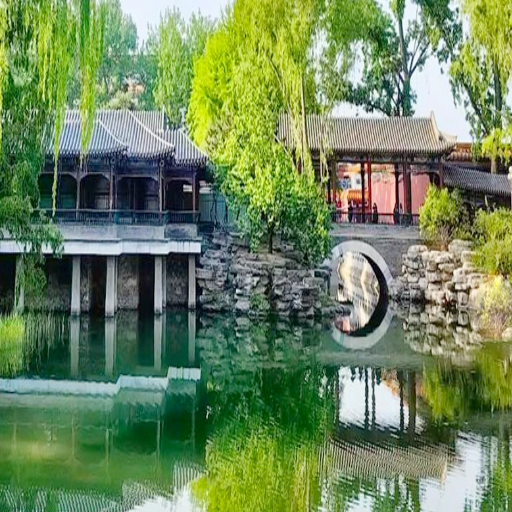
Summer Palace and Kunming Lake: exploring China's largest royal park
Summer Palace is a royal park and masterpiece of Chinese landscape design located in Beijing's northwestern suburbs. The imperial retreat combines natural scenery with ancient architecture. Its area is approximately 1.1 square miles, and the heart of the summer palace is “Kunming Lake.” This lake covers around three-fourths of the park's area and is well-known for beautiful views, quiet surroundings, and Gulf rides during the summers.
Most of the structures in the Summer Palace were built during the Purity period of the Qing Empire. It blends perfectly with the surrounding hills, lakes, pavilions, and bridges. Strolling through the Long Corridor, which is decorated with thousands of painted scenes, or getting a glance at the park from The Tower of Buddhist Incense and experiencing its grandeur, getting showered in the park below, the visitors are galore in the place. Summer Palace is a way of showing Chinese garden design. A tremendous human effort is placed on nature, giving China a strong cultural feel. Be it the Summer Palace's serene beauty or its rich, deep historical roots that are eye-catching, people visiting China must see the place to select the treasures achieved in China.
Jingshan Park: views of the Forbidden City
Jingshan Park is located north of the Palace Museum and is a prominent imperial garden in Beijing that houses a history rich in panoramic views of the Forbidden City. Its core attraction is Jingshan Hill, an artificial mound built in the Ming dynasty using soil excavated from the Imperial Palace’s moat, known as the Jingshan Mountain. The hill offers unparalleled views of the fengshui design and the symmetry of the Forbidden City. The mountain rises approximately 45 meters above the surroundings, rendering it a premier vantage point.
Jingshan Park also has a rich culture that embodies history. It was part of imperial grounds, serving as a retreat and a defensive structure for the emperors. The Hilltop is crowned with traditional pavilions whcih embody the five elemental peaks. The middle pavilion has a statue of Bodhisattva. Today, Jingshan Park serves as a recreational hub where locals and Hashang come to view the glorious rooftops of the Forbidden City and experience the splendor of Bejing’s History, precious in rich greenery.
The Ming Tombs' Secret Wonders Near Beijing
Located in a tranquil valley at the base of the Yanshan Mountains, the Ming Tombs are famous for their historical site and architectural beauty. This site is under the consideration of UNESCO as a World Heritage site. It represents the final resting place of 13 emperors, empresses, concubines, and other royal family members. Historically, this tomb represents the Ming Dynasty, and each tomb represents different members of the royal family, as different tombs also have different styles according to the buried members' nature. Furthermore, it's recorded in history that feng shui principles were evident in the order of construction of the tombs.
In contrast to other tombs, the epitome tomb is noted for its extraordinary breadth and design. Alongside the Changling Tomb, there is also the Dingling Tomb, which allows visitors to view the unclaimed iconic chamber. The temples that surround the locations have mythical stone sculptures. Other than that, the nature of this place is immersed with silence, mesmerizing with its emerald-colored trees and calm footpaths.
How can I experience traditional Beijing culture and lifestyle?
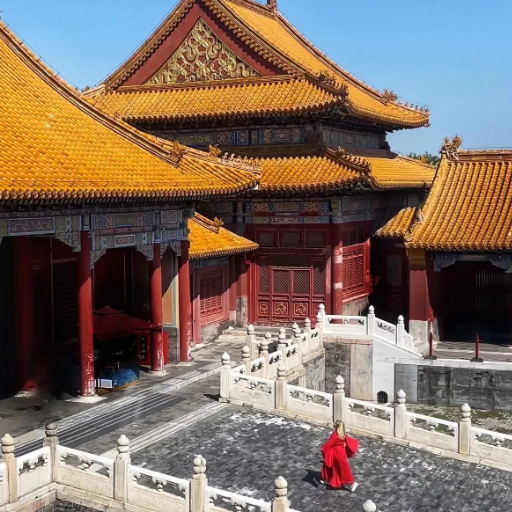
Exploring the ancient Hutong and courtyard regions of Beijing
The ancient Hutong areas of Beijing are rich in both culture and history. Hutongs stand for “alley” in Mandarin. Hutongs contain siheyuan, which is a type of household. Their astonishing architecture shows community living, and siheyuan is a type of household. The exploration of hutongs takes us back to the past and also illustrates the daily life structured by the family. Wright's Nanluoguxiang with Dongcheng District is still burrowing places filled with stiff and rheumatic alley artisans, who spent fluent years honing their expertise along with cultural foods.
The harmonious arrangement of dwelling places is the founder of Feng shui, which is illustrated by siheyuan. Courtyard houses supporting the lifestyle of one family had been vital back in time. Most of the siheyuans these days have been altered by a few restorations of a boutique in addition to hotels or specialty, also made to transforming and indulging in their means of cultural interaction becomes famous. Boarding these units in courtyard neighborhoods presents unbalanced outlines, inspiring elation, and extreme precipitation, giving a shower to modern adaptative to local citizens and people unattached to London could redefine the rich talk.
Lama Temple: The Tibetan Buddhist Temple of Most Importance in Beijing
Lama Temple, or Yonghe Temple, is Chinese Mongolia's capital's striking location for Tibetan Buddhism. This architectural marvel covers an area of almost 66,400 square meters and simultaneously highlights the artistic might of the Qing dynasty in 1694 and Tibetan Buddhist architecture, for which it was initially built to serve as a lamasery. Also, it underwent multiple construction phases ranging from the eunuch court to the Samdian lamasery.
The numerous halls that, despite burgeoning ornamented sutras and ceremonial relics, have the riders welcomed by the expansion of the temple. One of its most treasured artifacts is the awe-inspiring statue of Maitreya Buddha, a symbol of world peace and compassionate calm, 26 meters tall and carved from a singular chunk of white sandalwood. Each hall that the temple includes is imbued with Buddhism, which Tibetans meditate on, so each level of the temple reflects a core element of Tibetan Buddhism and fosters meditational tranquility.
Attracting pilgrims and tourists from around the globe, the Lama Temple is still an essential location for worship and a cultural center. As a temple, it is a site of worship that acts as a gateway for understanding Buddhism’s history and its profound influence on Chinese culture. If you are looking for some quiet time away from the city's noise, the Lama Temple is a nice place. It is quietly stunning.
Where to find genuine Peking duck and Night markets
Offering a unique blend of food, culture, and energy, Beijing's night markets are pretty eye-catching. If you want to experience the local culture while enjoying street food, these busy markets are the right choice. Wangfujing Snack Street is perhaps the most famous, with tanghulu (candied fruits) and scorpion skewers. For a more traditional feel, the Donghuangchenggen Night Market is perfect for those seeking quiet charm and delicious food at any time.
Many famous places in Beijing serve authentic Peking duck. One is Quanjude, renowned for its duck served in painstaking detail with thin pancakes and hoisin sauce. It is a centuries-old institution offering a classic dining experience. Another favorite is Bianyifang, famed for its closed-oven roasting, creating a unique crisp texture. Both of these restaurants provide a glimpse into the mastery that made the dish a staple of imperial Beijing. Experiencing a colorful night market combined with an authentic meal of Peking Duck offers a unique encounter with the culinary delights of Beijing.
What modern attractions should I include in my Beijing itinerary?
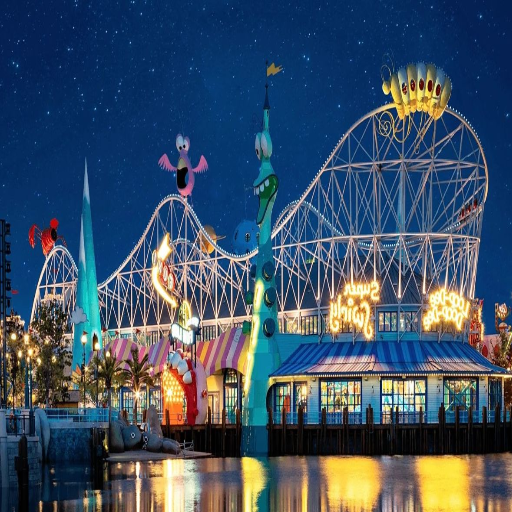
798 Art District: The Center Of Contemporary Art In Beijing
When I arrived at the 798 Art District, I could not help but feel I was the focal point of modern art in Beijing. The former industrial complex is now a flourishing center of creation, boasting galleries, cafes, boutique stores, and even art studios. As I walked through its streets covered with murals, I found a fascinating collection of installations, sculptures, and exhibits representing Chinese contemporary art's changeable nature. Established and emerging artists are represented in the district, and their pieces range from modern artworks to stimulating photography.
What makes the 798 art district exceptionally unique is its combination of history and modernism. The remnants of its industrial past, Bauhaus-inspired architecture, act as the ideal setting for the contemporary artworks showcased within. Beyond the artwork itself, the district's vibration is what I found most appealing. There is a constant buzz in the air as many of the creative spaces in the district have workshops, film showings, and live performances that encourage participation in the artistic experience.
A trip to 798 is not only for art lovers – any traveler can delight in its unique ambiance. While gallery-hopping, I also rested in an artistic café with creative interiors and shopped at some boutiques with handmade crafts and souvenirs that I found intriguing. If you want to experience the techno-enthusiast side of Beijing or whether you just want to relish the afternoon in a lively and vibrant zone, the 798 Art District is bound to provide an exceptional experience showcasing the country’s artistic development alongside its international significance.
To anticipate China's latest theme park - Universal Studios Beijing
Universal Studios Beijing is one of the newer theme parks in the heart of China's capital city. During my excursion to the park, I found the fusion of the Western and Chinese aspects striking. The park showcased beautifully crafted zones themed around Jurassic World, Minions, Transformers, and Harry Potter franchises. As a die-hard franchise fan, I remember the first time I set foot in Hogsmeade and Hogwarts. The immersion into the magical world created by J.K. Rowling is indeed iconic. It still lingers in my mind. Moreover, I was awestruck by the advancements in technology for the rides. Everything at the park was at par or significantly better than my expectations. From the rides to the architecture and landscaping of the park, Universal Studios Beijing has captured a cinematic vision.
One more exceptional characteristic of Universal Studios Beijing is how it pays homage to Chinese culture. Kung Fu Panda Land of Awesomeness is a unique park that features extraordinary rides based on Chinese legends and traditions. The incorporation of local storytelling into the rides and shows using popular characters made it even more special. Besides that, there was no shortage of places to relax and enjoy a variety of authentic Chinese dishes as well as other international cuisine.
Overall, the whole experience of visiting Universal Studios Beijing gave me the feeling of being transported to a new world full of endless imagination and adventures. Universal’s world-renowned signature attractions are combined with local flair to ensure there is something new for everyone. Be it for heart-stopping adventures, living movie scenes, or looking for fun with the family, the park is a breathtaking experience that blends contemporary entertainment with a sprinkle of China.
National Museum of China and other must-see museums
For those eager to learn about the history and culture of the country, a visit to the National Museum of China is obligatory. For its part, this colossal museum, located in the Southern part of Beijing on Tiananmen Square itself, hosts an astounding showcase that encompasses the entire 5,000 years of the history of China. It offers not only ancient treasures like prehistoric jade carvings or bronze vessels but modern Chinese art, as well as a variety of other traditional forms of art and contemporary exhibitions at the museum, giving one an insight into the evolution of China as a cultural hub. Situated in well-planned structured surroundings, it makes it seem as if walking around the exhibits is traveling through history and connecting with the distinctive traditions, milestones, and narratives that have shaped the identity of the strong nation.
In addition to the National Museum of China, Beijing’s world-class museums have many more to offer. The Palace Museum, part of the dynastic rule and located inside the majestic Forbidden City, captures the essence of ancient Chinese history through stunning architecture and valuable treasures. Also, the Capital Museum, which has a modern touch, is equally remarkable with its contemporary design and displays focusing on Beijing’s rich history. This is further complemented by the 798 Art District, which transforms traditional galleries into bold cultural installations perfect for contemporary art lovers. With numerous options, the city stands out with its exceptional cultural offerings.
Frequently Asked Questions (FAQs)
Q: What are the must-visit tourist attractions in Beijing?
A: Some of the must-see places when traveling to Beijing are The Forbidden City (which is the biggest palace complex in the world), The Great Wall, The Temple of Heaven, the Summer Palace with Longevity Hill, Tiananmen Square, Olympic Bird’s Nest Stadium, Lama Temple and 798 Art District. All these places are considered the city's landmarks, powerfully depicting China's rich history and culture and modern advancements in Beijing. As a rule of thumb, most tourists who visit China spend 3 to 4 days in Beijing to fully appreciate and enjoy these places' beauty.
Q: How would one efficiently schedule a Beijing trip to see all 15 attractions?
A: To efficiently complete the top 15 attractions in Beijing, make a journey for each day covering nearby locations. For Day 1, visit Tiananmen Square, The Forbidden City, and Jingshan Park. Day 2 consists of The Temple of Heaven and the 798 Art District. For Day 3, you can have a full day’s excursion at The Great Wall (choose between Mutianyu or Jinshanling sections). Days 4 and 5 are more relaxed and consist of The Summer Palace, Olympic Park (where the 2008 Beijing Olympic Games were held), Lama Temple, Beihai Park, and hutong/walking neighborhoods. It is recommended that the subway be used for efficient travel between sites and guided tours of Beijing for faster navigation through the sites and a better understanding of the history.
Q: What should first-time visitors do in Beijing?
A: Visitors who are coming to Beijing for the first time should ensure that they attempt these activities: Tour the Forbidden City and see the Great Wall (Mutianyu or Jinshanling sections are recommended), see the flag raising at the Tiananmen Square, visit Hutongs by rickshaw, relish in the classic taste of Peking Duck, Tour the Summer Palace, view the Longevity Hill, watch Beijing Opera for the first time, and shop at the Wangfujing or the Panjiayuan. These activities combine the rich cultural immersion, delicious local cuisine, and unique historical sites that one must experience during their trip to Beijing.
Q: When is the preferred time to visit and explore Beijing?
A: From a tourist's perspective, the preferred time to visit is spring (April to May) and autumn (mid-September to October), as temperatures are moderate and the skies are clear. During this period, summers can be extremely hot and humid, whereas winters are much colder( November to March), but there is less tourist traffic. Winter snowfalls make for picturesque scenes without the crowds. Be wary of peak Chinese national holiday periods due to heavy traffic and highly crowded tourist hotspots.
Q: What’s the best way to see Beijing when I’m using public transport?
A: The subway is the most convenient way to navigate through Beijing. It provides access to most places of interest, as all stops are spoiled with English translations. For easy access, buy a top-up travel card. Buses are also an option, but they are more challenging to navigate for people who do not speak Mandarin. Taxis are cheap, yet having your destination written in Chinese is critical. Download some travel apps like Baidu Maps for more straightforward navigation throughout Beijing. The subway allows easy access to central areas in Beijing, like Tiananmen Square and the area around the Forbidden City. There is also an airport express that connects straight to the center of Beijing.
Q: What should I know before I visit the Great Wall of China from Beijing?
A: As you travel to Beijing, carefully select the section of the Great Wall you wish to visit. The cable car options available at Mutianyu make it well-restored and less crowded compared to Badaling, while Jinshanling has fewer tourists and a more authentic experience. Simatai offers night visits. The best times to visit are spring and autumn to get comfortable temperatures and beautiful views. Although a full-day visit is preferable, at least a half-day is required. To reach the wall, you can use organized Beijing tours, private drivers, or public buses. Wear good shoes, carry water, and prepare for long walks and climbing. To fully appreciate the historical significance of this iconic landmark of the People’s Republic of China, it is crucial to set aside an adequate amount of time.
Q: Which sites related to Chairman Mao can one find in Beijing?
A: Beijing has some notable places for enthusiastic students of modern Chinese history and Mao. The first and most important is Tiananmen Square. You can see Mao’s portrait at the Gate of Heavenly Peace and visit his Mausoleum (photography is prohibited and there are set hours). The National Museum of China on the east side of the square has a lot of exhibits on Mao and the People’s Republic of China – the Museum is situated at the Eastern side of the Square. The Military Museum of the Chinese People's Revolution and Mao's former residence in Zhongnanhai are also closed to the public. Still, they do assist in gaining an understanding of Mao's impact on Chinese history.
Q: What cultural and artistic activities can I do in Beijing?
A: There is no shortage of culture and art in Beijing. Check out the 798 Art District, which features the best contemporary art galleries in old warehouses. Don’t miss out on traditional performances such as the Beijing Opera at the Liyuan Theatre or Kung fu performances at the Red Theatre. Concerts and other shows are available at the National Centre for the Performing Arts. Also, try to appreciate the city's traditional culture by walking through the ancient Hutongs surrounding Houhai Lake. Take a calligraphy class or visit the National Museum of China. Visit the Capital Museum or Prince Gong's Mansion to widen your knowledge of Chinese history. As stated in Lonely Planet, Beijing's art scene is one of Asia's most dynamic as it merges ancient traditions with cutting-edge contemporary work.
Q: What are the best day trips around Beijing?
A: During my travel to Beijing, I take the opportunity to appreciate the countryside with these day trips." Sites of interest include The Eastern Qing Tombs, Gubei Water Town, Tea Science and Technology Park in the Fragrant Hills, Cuandixia Village, and Xiangshan Park. Lugou Bridge is also a great historical site to see. Chengde Mountain Resort is also interesting, but one must depart very early in the day. These historical sites provide great information about the history of China while clearing the mind from the busy city.
Q: Where should I stay in Beijing to easily access the main attractions?
A: For convenient access to major tourist attractions in Beijing, please consider these areas: Wangfujing/Dongcheng District is within walking distance from The Forbidden City, The National Museum, and Tiananmen Square, along with good subway connections. The Sanlitun area has a vibrant nightlife, international restaurants, and good transport links. Gulou/Nanluoguxiang neighborhood has a lovely hutong charm while still being central. Xicheng District, near Beihai Park, offers a traditional atmosphere while conveniently located near historical sites. Budget travelers may find the Beijing Railway Station area with economical options. All these locations are well connected by subway, which will aid you on your Beijing trip and help you explore the city’s attractions.
